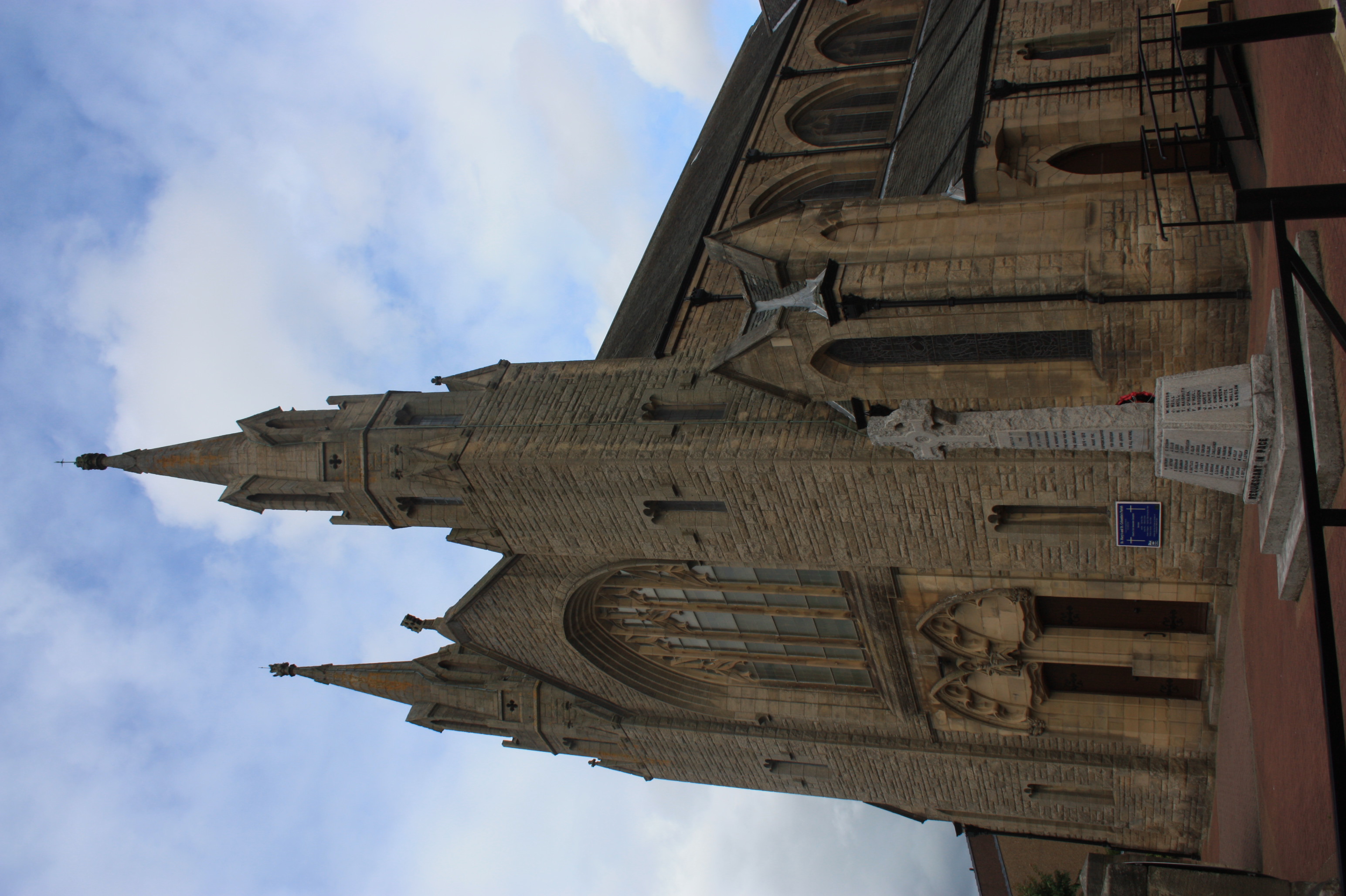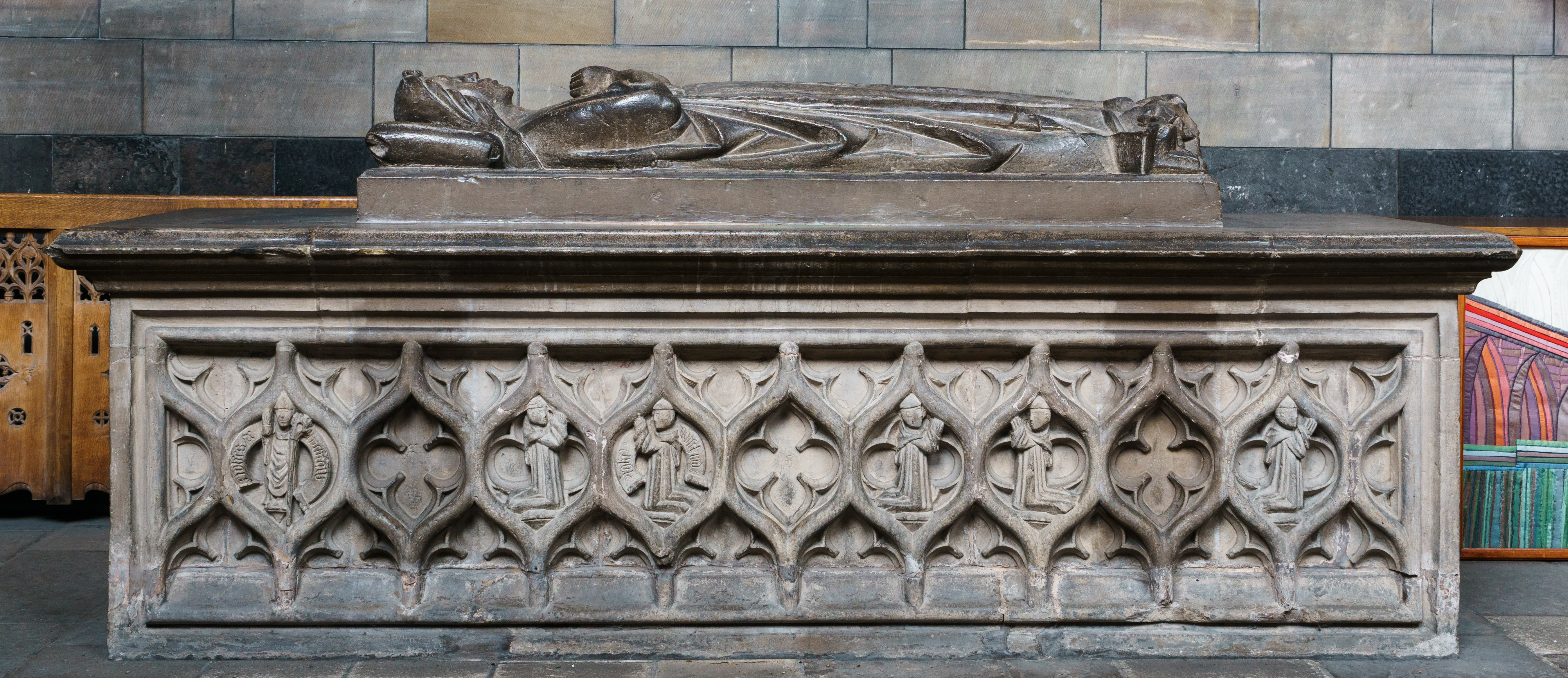|
Bathgate Castle
Bathgate Castle, near Bathgate, West Lothian West Lothian ( sco, Wast Lowden; gd, Lodainn an Iar) is one of the 32 council areas of Scotland, and was one of its shires of Scotland, historic counties. The county was called Linlithgowshire until 1925. The historic county was bounded geogra ..., Scotland, was a motte-and-bailey castle. It was abandoned after 1327 and only the motte survives aside from some earthworks. It was designated a scheduled monument in 1961 by Historic Environment Scotland. History The castle was the caput of the barony of Bathgate. The castle was part of the dowry of Marjorie Bruce, daughter of King Robert the Bruce, upon her marriage to Walter, High Steward of Scotland in 1314. Walter died there in 1327, and the castle appears to have been abandoned afterwards. The remains of the castle are located within a golf course. References Further reading * {{Authority control Castles in West Lothian Motte-and-bailey castles House of Stuart ... [...More Info...] [...Related Items...] OR: [Wikipedia] [Google] [Baidu] |
Bathgate
Bathgate ( sco, Bathket or , gd, Both Chèit) is a town in West Lothian, Scotland, west of Livingston, Scotland, Livingston and adjacent to the M8 motorway (Scotland), M8 motorway. Nearby towns are Armadale, West Lothian, Armadale, Blackburn, West Lothian, Blackburn, Linlithgow, Livingston, West Calder and Whitburn, West Lothian, Whitburn. Situated south of the ancient Neolithic burial site at Cairnpapple Hill, Bathgate and the surrounding area show signs of habitation since about 3500 BC and the world's oldest known reptile fossil has been found in the town. By the 12th century, Bathgate was a small settlement, with a church at Kirkton and a castle south of the present day town centre. Local mines were established in the 17th century but the town remained small in size until the coming of the industrial revolution. By the Victorian era, Bathgate grew in prominence as an industrial and mining centre, principally associated with the coal and Shale oil extraction, shale oil indu ... [...More Info...] [...Related Items...] OR: [Wikipedia] [Google] [Baidu] |
West Lothian
West Lothian ( sco, Wast Lowden; gd, Lodainn an Iar) is one of the 32 council areas of Scotland, and was one of its historic counties. The county was called Linlithgowshire until 1925. The historic county was bounded geographically by the Avon to the west and the Almond to the east. The modern council area occupies a larger area than the historic county. It was reshaped following local government reforms in 1975: some areas in the west were transferred to Falkirk; some areas in the east were transferred to Edinburgh; and some areas that had formerly been part of in Midlothian were added to West Lothian. West Lothian lies on the southern shore of the Firth of Forth and is predominantly rural, though there were extensive coal, iron, and shale oil mining operations in the 19th and 20th centuries. These created distinctive red-spoil heaps (locally known as " bings") throughout the council area. The old county town was the royal burgh of Linlithgow, but the largest town (and t ... [...More Info...] [...Related Items...] OR: [Wikipedia] [Google] [Baidu] |
Motte-and-bailey Castle
A motte-and-bailey castle is a European fortification with a wooden or stone keep situated on a raised area of ground called a motte, accompanied by a walled courtyard, or bailey, surrounded by a protective ditch and palisade. Relatively easy to build with unskilled labour, but still militarily formidable, these castles were built across northern Europe from the 10th century onwards, spreading from Normandy and Anjou in France, into the Holy Roman Empire in the 11th century. The Normans introduced the design into England and Wales. Motte-and-bailey castles were adopted in Scotland, Ireland, the Low Countries and Denmark in the 12th and 13th centuries. Windsor Castle, in England, is an example of a motte-and-bailey castle. By the end of the 13th century, the design was largely superseded by alternative forms of fortification, but the earthworks remain a prominent feature in many countries. Architecture Structures A motte-and-bailey castle was made up of two structures: a ... [...More Info...] [...Related Items...] OR: [Wikipedia] [Google] [Baidu] |
Scheduled Monument
In the United Kingdom, a scheduled monument is a nationally important archaeological site or historic building, given protection against unauthorised change. The various pieces of legislation that legally protect heritage assets from damage and destruction are grouped under the term "designation." The protection provided to scheduled monuments is given under the Ancient Monuments and Archaeological Areas Act 1979, which is a different law from that used for listed buildings (which fall within the town and country planning system). A heritage asset is a part of the historic environment that is valued because of its historic, archaeological, architectural or artistic interest. Only some of these are judged to be important enough to have extra legal protection through designation. There are about 20,000 scheduled monuments in England representing about 37,000 heritage assets. Of the tens of thousands of scheduled monuments in the UK, most are inconspicuous archaeological sites, but ... [...More Info...] [...Related Items...] OR: [Wikipedia] [Google] [Baidu] |
Historic Environment Scotland
Historic Environment Scotland (HES) ( gd, Àrainneachd Eachdraidheil Alba) is an executive non-departmental public body responsible for investigating, caring for and promoting Scotland's historic environment. HES was formed in 2015 from the merger of government agency Historic Scotland with the Royal Commission on the Ancient and Historical Monuments of Scotland (RCAHMS). Among other duties, Historic Environment Scotland maintains more than 300 properties of national importance including Edinburgh Castle, Skara Brae and Fort George. History The responsibilities of HES were formerly split between Historic Scotland, a government agency responsible for properties of national importance, and the Royal Commission on the Ancient and Historical Monuments of Scotland (RCAHMS), which collected and managed records about Scotland's historic environment. Under the terms of a Bill of the Scottish Parliament published on 3 March 2014, the pair were dissolved and their functions transferr ... [...More Info...] [...Related Items...] OR: [Wikipedia] [Google] [Baidu] |
Caput
Latin words and phrases {{Short pages monitor ... [...More Info...] [...Related Items...] OR: [Wikipedia] [Google] [Baidu] |
Marjorie Bruce
Marjorie Bruce or Marjorie de Brus (c. 12961316 or 1317) was the eldest daughter of Robert the Bruce, King of Scots, and the only child born of his first marriage with Isabella of Mar. Marjorie's marriage to Walter, High Steward of Scotland, gave rise to the House of Stewart. Her son was the first Stewart monarch, King Robert II of Scotland. Early life Her mother, Isabella, was a noblewoman from the Clan Mar. Marjorie was named after her father's mother, Marjorie, Countess of Carrick. Soon after giving birth to Marjorie, at the age of 19, Isabella died."Elizabeth de Burgh and Marjorie Bruce". Foghlam Alba Marjorie's father was at that time the |
Robert The Bruce
Robert I (11 July 1274 – 7 June 1329), popularly known as Robert the Bruce (Scottish Gaelic: ''Raibeart an Bruis''), was King of Scots from 1306 to his death in 1329. One of the most renowned warriors of his generation, Robert eventually led Kingdom of Scotland, Scotland during the First War of Scottish Independence against Kingdom of England, England. He fought successfully during his reign to regain Scotland's place as an independent kingdom and is now revered in Scotland as a folk hero, national hero. Robert was a fourth great-grandson of David I of Scotland, King David I, and his grandfather, Robert de Brus, 5th Lord of Annandale, was one of the claimants to the Scottish throne during the "Great Cause". As Earl of Carrick, Robert the Bruce supported his family's claim to the Scottish throne and took part in William Wallace's revolt against Edward I of England. Appointed in 1298 as a Guardian of Scotland alongside his chief rival for the throne, John Comyn III of Bade ... [...More Info...] [...Related Items...] OR: [Wikipedia] [Google] [Baidu] |
Walter Stewart, 6th High Steward Of Scotland
Walter Stewart (G. W. S. Barrow, ‘Stewart family (per. c.1110–c.1350)’, ''Oxford Dictionary of National Biography'', Oxford University Press, 2004.9 April 1327) was the 6th Hereditary High Steward of Scotland and was the father of King Robert II of Scotland, the first Stewart monarch. Origins He was born at Bathgate Castle, West Lothian, Scotland, the eldest son and heir of James Stewart, 5th High Steward of Scotland (c.1260-1309) by his third wife Giles (Latinised to ''Egidia'') de Burgh, a daughter of the Irish nobleman Walter de Burgh, 1st Earl of Ulster. Career At the age of 21 Walter fought against the English at the Battle of Bannockburn in 1314Simpson, David, ''The Genealogical and Chronological History of the Stuarts'', Edinburgh, 1713. where according to some sources, together with Douglas he commanded the left wing of the Scots' army,Anderson, William, ''The Scottish Nation'', Edinburgh, 1867, vol.ix, p. 513, states he was 21 years of age at Bannockburn. but acc ... [...More Info...] [...Related Items...] OR: [Wikipedia] [Google] [Baidu] |
Telegraph (Brisbane)
The ''Telegraph'' was an evening newspaper published in Brisbane, Queensland, Australia. It was first published on 1 October 1872 and its final edition appeared on 5 February 1988. In its day it was recognised as one of the best news pictorial newspapers in the country.Daily Sun, Saturday, 6 February 1988 Its Pink Sports edition (printed distinctively on pink newsprint and sold on Brisbane streets from about 6 pm on Saturdays) was a particularly excellent production produced under tight deadlines. It included results and pictures of Brisbane's Saturday afternoon sports including the results of the last horse race of the day. History In 1871 a group of local businessmen, Robert Armour, John Killeen Handy (M.L.A. for Brisbane), John Warde, John Burns, J. D. Heale and J. K. Buchanan formed the Telegraph Newspaper Co. Ltd. The editor was Theophilus Parsons Pugh, a former editor of the ''Brisbane Courier'' and founder of ''Pugh's Almanac''.Queensland Press Limited history report 1 ... [...More Info...] [...Related Items...] OR: [Wikipedia] [Google] [Baidu] |
Castles In West Lothian
A castle is a type of fortified structure built during the Middle Ages predominantly by the nobility or royalty and by military orders. Scholars debate the scope of the word ''castle'', but usually consider it to be the private fortified residence of a lord or noble. This is distinct from a palace, which is not fortified; from a fortress, which was not always a residence for royalty or nobility; from a ''pleasance'' which was a walled-in residence for nobility, but not adequately fortified; and from a fortified settlement, which was a public defence – though there are many similarities among these types of construction. Use of the term has varied over time and has also been applied to structures such as hill forts and 19th-20th century homes built to resemble castles. Over the approximately 900 years when genuine castles were built, they took on a great many forms with many different features, although some, such as curtain walls, arrowslits, and portcullises, were ... [...More Info...] [...Related Items...] OR: [Wikipedia] [Google] [Baidu] |
Motte-and-bailey Castles
A motte-and-bailey castle is a European fortification with a wooden or stone keep situated on a raised area of ground called a motte, accompanied by a walled courtyard, or bailey, surrounded by a protective ditch and palisade. Relatively easy to build with unskilled labour, but still militarily formidable, these castles were built across northern Europe from the 10th century onwards, spreading from Normandy and Anjou in France, into the Holy Roman Empire in the 11th century. The Normans introduced the design into England and Wales. Motte-and-bailey castles were adopted in Scotland, Ireland, the Low Countries and Denmark in the 12th and 13th centuries. Windsor Castle, in England, is an example of a motte-and-bailey castle. By the end of the 13th century, the design was largely superseded by alternative forms of fortification, but the earthworks remain a prominent feature in many countries. Architecture Structures A motte-and-bailey castle was made up of two structures: a mott ... [...More Info...] [...Related Items...] OR: [Wikipedia] [Google] [Baidu] |






